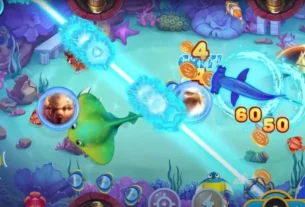In the realm of video games, the immersive quality of the virtual environment plays a crucial role in captivating players and enhancing their overall experience. From sprawling open worlds to intricately designed levels, the art of creating compelling 3D game environments requires a blend of creativity, technical expertise, and an understanding of player psychology.
In this article, we delve into the secrets of 3D game environment design, exploring strategies to craft captivating and engaging virtual worlds that leave a lasting impression on players.
Understanding Player Engagement
Before diving into the intricacies of 3D game environment design, it’s essential to grasp the concept of player engagement. Engaging environments are those that capture the player’s attention, evoke emotions, and foster a sense of immersion.
Achieving this requires careful consideration of various factors, including visual aesthetics, level layout, narrative integration, and interactive elements.
Visual Aesthetics: Creating Eye-catching Worlds
One of the first aspects players notice when entering a virtual world is its visual appeal. Stunning graphics, vibrant colors, and attention to detail can significantly enhance the immersive experience.
Whether it’s the lush landscapes of an open-world adventure or the gritty urban environments of a dystopian city, striking visual aesthetics set the tone and draw players into the game world.
Level Design: Balancing Exploration and Guidance
Effective level design is crucial for guiding players through the 3D environment while still allowing freedom for exploration.
Well-designed levels strike a balance between linear progression and non-linear exploration, providing players with a sense of direction while encouraging them to discover hidden secrets and pathways.
Cleverly placed landmarks, environmental cues, and level architecture help guide players without feeling overly restrictive.
Narrative Integration: Weaving Stories into the Environment
A compelling narrative can significantly enhance the immersion of a game environment. By seamlessly integrating storytelling elements into the world itself, designers can create a sense of cohesion and depth.
Environmental storytelling, through visual clues, environmental changes, and interactive objects, allows players to uncover the lore and backstory of the game world organically as they explore.
Interactive Elements: Fostering Player Agency
Interactivity is key to engaging players and making them feel like active participants in the game world. Incorporating interactive elements such as destructible objects, dynamic weather systems, and interactive NPCs adds depth and realism to the environment.
Player actions should have meaningful consequences, whether it’s altering the course of the story or affecting the behavior of in-game characters.
Technical Considerations: Optimization and Performance
While creativity is essential in 3D game environment design, technical considerations cannot be overlooked.
Optimizing assets, managing resource usage, and ensuring smooth performance across different hardware configurations are crucial for delivering a seamless gaming experience.
Techniques such as level-of-detail rendering, occlusion culling, and texture streaming help maintain visual fidelity without sacrificing performance.
Tools and Technologies: Empowering Designers
Advancements in game development tools and technologies have empowered designers to create increasingly complex and immersive game environments.
From powerful game engines like Unreal Engine and Unity to advanced rendering techniques such as physically based rendering (PBR) and real-time ray tracing, designers have access to a wealth of tools and resources to bring their creative visions to life.
Case Studies: Examining Success Stories
To illustrate the principles of effective 3D game environment design, let’s examine a few notable examples from the world of video games:
The Witcher 3: Wild Hunt: Known for its sprawling open world and attention to detail, The Witcher 3 immerses players in the rich and vibrant landscapes of the Continent. From the bustling city streets of Novigrad to the untamed wilderness of Skellige, each location is meticulously crafted to create a sense of immersion and authenticity.
BioShock: Set in the underwater city of Rapture, BioShock’s environment is as much a character as the protagonists themselves. The art deco architecture, neon-lit corridors, and eerie underwater vistas combine to create a hauntingly beautiful and atmospheric world that captivates players from start to finish.
The Legend of Zelda: Breath of the Wild: With its vast open world and dynamic physics systems, Breath of the Wild redefines the concept of player freedom. Players are encouraged to explore every nook and cranny of the sprawling Hyrule landscape, uncovering hidden treasures, solving puzzles, and engaging in emergent gameplay experiences along the way.
Conclusion
The art of 3D game environment design is a multifaceted endeavor that requires a blend of creativity, technical expertise, and an understanding of player psychology.
By focusing on visual aesthetics, level design, narrative integration, interactive elements, and technical considerations, designers can create captivating and immersive virtual worlds that leave a lasting impression on players.
As technology continues to advance and tools become more accessible, the possibilities for creating engaging 3D game environments are virtually limitless.




